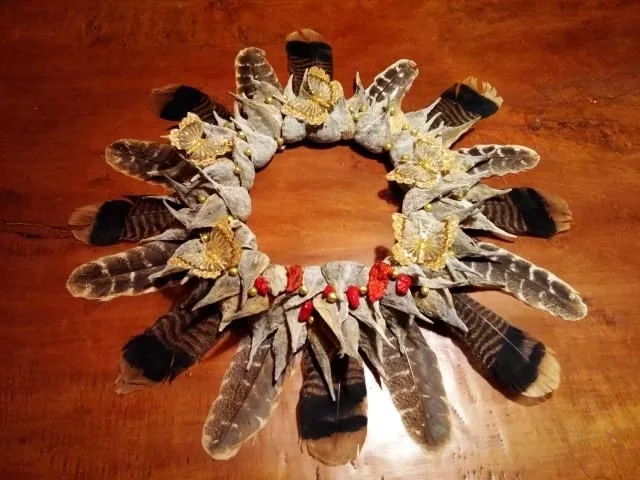
I must warn you dear reader, that this particular article is "peppered" with lots of life lessons and symbology.
Most of the materials that I used to make this wreath (which I plan to give as a gift) I either foraged for or grew.
I wouldn't describe myself as artistically inclined or even crafty. (So, I hope you're all as shocked as I am about the outcome.)
When I was about thirteen years old, I inadvertently overhead my English teacher and my Art teacher discussing my abilities. I wished that I never heard them because I was too young to truly understand that they were complimenting me, instead of scrutinizing my abilities. They had both come to the conclusion unanimously that I was a "good writer" and a "good artist" as long as I was inspired.
In my young mind, I interpreted that to mean that (most of the time) my artistic and creative writing skills were mediocre at best. I reasoned that nobody could be inspired all of the time.
Unfortunately, I have carried that "mediocre label" (which was just my interpretation of an opinion) and I had let it chip away at my confidence for too long.
Last night was a turning point.
I had no idea what I was doing and I had to talk myself around. Was I inspired enough to make a beautiful piece of art or was it going to look...well, like a dog's breakfast and be displeasing to the eye?
I decided not to listen to my self-doubt voice as I replayed the 2 teachers' conversation in my head (for what felt like the millionth time).
The thing is, we need to be challenging ourselves with "new thinking and doing" regularly if we want to keep evolving intellectually.
Like deciding to make a wreath out of turkey feathers, stunted dried peppers and about 80 Milkweed Pods, for the very first time.
(The dark grey material (that makes up the bulk of the wreath and looks like driftwood) is actually dried milkweed pods.)
Milkweed is the only plant that Monarch caterpillars feed on, use to spin their cocoons from and then emerge as Monarch butterflies. The plants grow in fields and in long grass but over the last 20 years, this species of plant has been negatively impacted by urban sprawl and weed spraying.
(Below is a photo of a Monarch butterfly nursery. You can see the caterpillars, their cocoons and the beautiful butterflies that have emerged after their metamorphosis.)
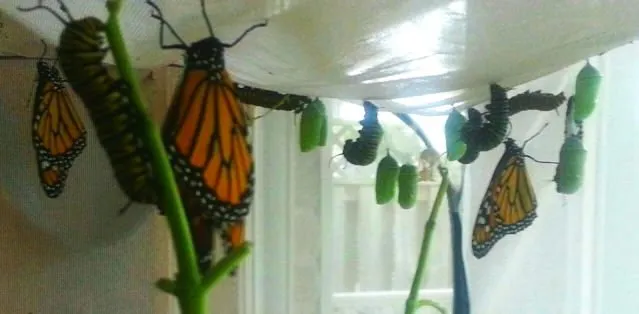
(My girlfriend, who is an elementary school teacher, built this enclosure for her grade 4 class. She used it to teach the students all about the milkweed plant and what Monarch butterflies do. Photo credit: T. Walden)
The plant generally grows all summer, produces a flower, then a pod full of seeds. These seeds are carried through the air and if they survive the winter, will germinate in the Spring. Here's a photo of the field that I foraged for these milkweed pods in:

In Canada, late October to mid-November is the best time to forage for, harvest and dry milkweed pods. The butterflies are now finished with this plant and are currently en route to their winter destination which is as far away as MEXICO, some 3,000 miles away!
In the photos below, you can see what a fresher pod looks like, then what it dries to. I have also taken a photo of the seed. Once the pods split open, they will release their seeds. Each seed comes equipped with something called a coma. The coma is a very sticky piece of fluff that when dried and activated, act like a little sail and can carry the milkweed seed a great distance from the mother plant.
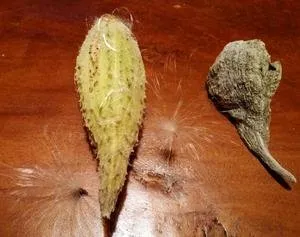

When I gathered milkweed pods this year, I made a point of freeing as many seeds as I could and I releasing them into the air. With any luck this should help to restore the plant's population in my area and in turn help the Monarch butterflies.
To Make This Wreath
I started by gathering materials.
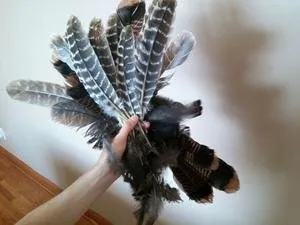

I used 16 turkey feather from a beautiful bird who got hit by a car in front of my house. The bird belonged to a special flock that I have been observing since they were hatched 6 months ago. I also used approximately 80 dried pods that I had cleaned the seeds and removed the stems from.
Armed with a glue gun and 3.5 long glue sticks, I quickly learned what hot glue feels like when it burns your fingertips and you can't remove it without burning more finger tips.

The glue gun. One temperature. Burning hot.
I bought a wreath at a Dollar store and completely deconstructed it to re-use the frame. I used it to provide the structural support to which I affixed everything, with burning hot glue. Did I mention it was burning hot?
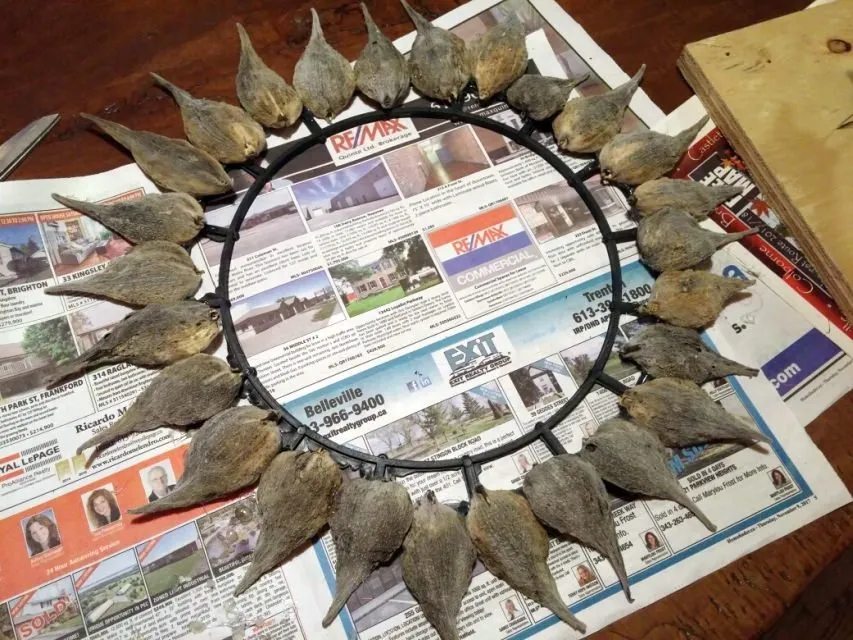
First layer on.
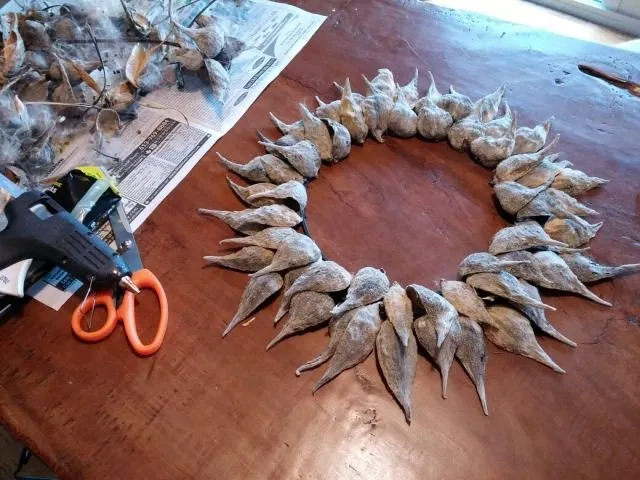
Second layer on.
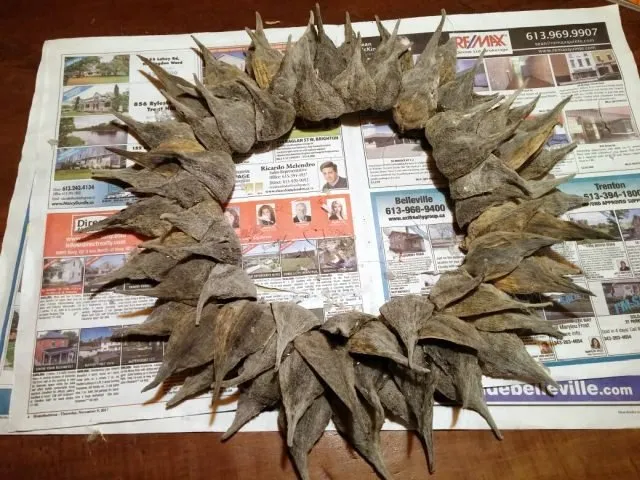
Third and fourth layer on.
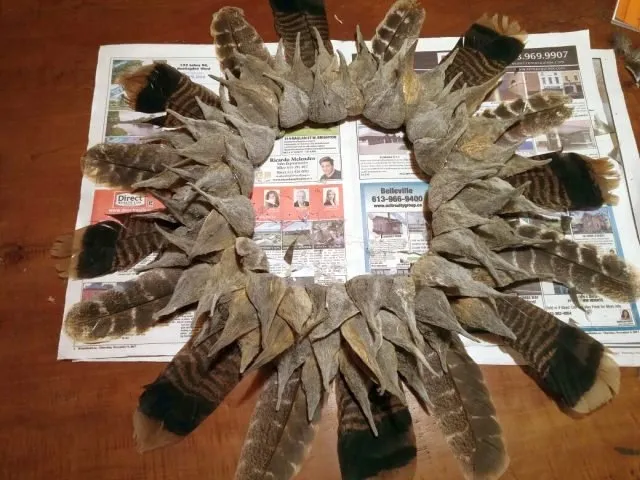
Feathers in place with alternating pattern.
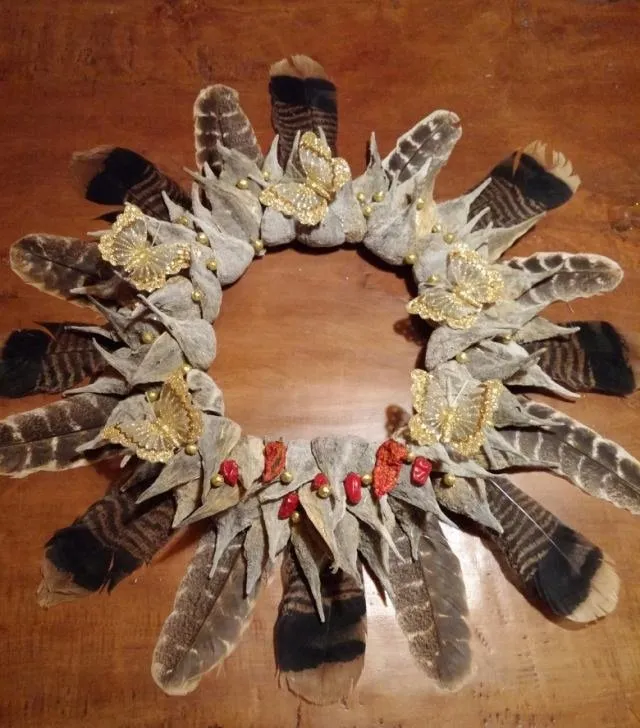
Five golden butterflies in place, 2 larger ghost peppers, 5 little baby peppers and quite frankly more little gold balls than I care to count.

I think the different textures make this a very interesting piece of art to look at.
I welcome your comments and I invite you to follow me on my journey...nothing is safe from my BURNING HOT glue gun now. ;)
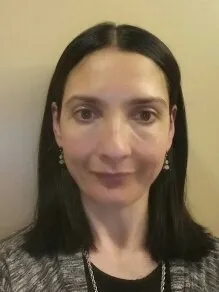
~ Rebecca Ryan